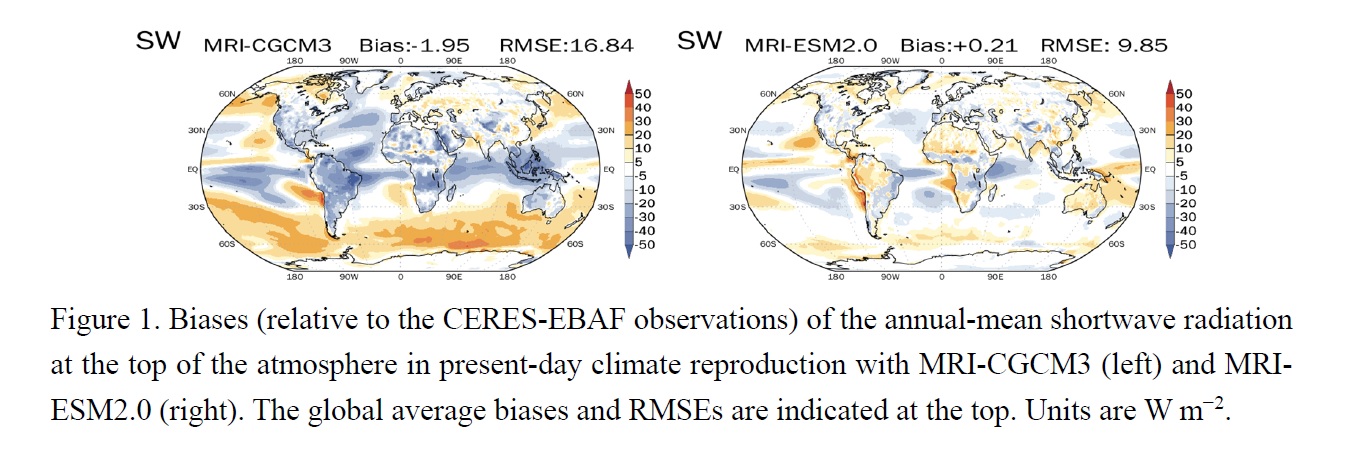Graphical Abstract
Yukimoto, S., H. Kawai, T. Koshiro, N. Oshima, K. Yoshida, S. Urakawa, H. Tsujino, M. Deushi, T. Tanaka, M. Hosaka, S. Yabu, H. Yoshimura, E. Shindo, R. Mizuta, A. Obata, Y. Adachi, and M. Ishii, 2019: The Meteorological Research Institute Earth System Model version 2.0, MRI-ESM2.0:
Description and basic evaluation of the physical component. J. Meteor. Soc. Japan, 97, 931-965.
https://doi.org/10.2151/jmsj.2019-051
JMSJ Editor's Highlight
Plain Language Summary: A new earth system model MRI-ESM 2.0 was developed at the Meteorological Research Institute. As a result of enhancement of the atmospheric vertical resolution and various improvements for the cloud scheme, the aerosol model, and the ocean model, the performance in present-day climate reproduction has significantly improved in many aspects compared to the former model MRI-CGCM3. Root-meansquare- error (RMSE) of the shortwave radiation distribution at the top of the atmosphere reduced by about 42% compared to MRI-CGCM3 (Figure 1). Performance is also improved in expressing climate change and variability. For example, the observed global mean surface temperature change from the mid-19th century to the present is reproduced quite well. The stratospheric quasi biennial oscillation is now represented realistically.
Highlights:
- As a result of various improvements for the cloud scheme including the introduction of a new stratocumulus scheme, the underestimated biases in cloud reflection in the Southern Ocean that were persistent in the CMIP5 models have been significantly reduced.
- The accurate radiation distribution led to the implied ocean heat transport very close to the observation-based estimation, which contributed to the reduction of biases in the surface temperature distribution.
- The overall change in the global surface temperature relative to the preindustrial level is well reproduced, though the multi-decade-long change in the temperature trend since the middle of the 20th century is somewhat exaggerated.







